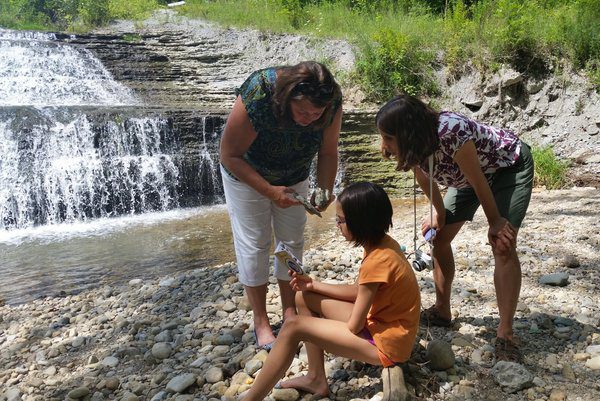At these two Indiana locations, curious visitors can get a first-hand look and insight into what the Hoosier State might have looked like millions of years ago. Searching for fossils is a unique activity, available at these two spots in Indiana
In Southern Indiana, the Falls of the Ohio presented the biggest natural challenge for early travelers on the Ohio River. But underneath the flowing water sits a 390-million-year-old Devonian-era fossil bed, one of the oldest of its kind in the world. These days, guests can stop by a state park interpretative center to learn more about the region’s topography and treasure trove of findings through interactive displays and exhibits before walking out into and onto the bed itself at the edge of the river.
Although you can’t take any fossils you find home (collecting is prohibited), visitors are certainly welcome to observe and admire the different types on view. River levels are at their lowest between August and October, making late summer and early fall the best time to explore. For more information, visit GoSoIn.com.
Corals and trilobites and bivalves — oh my! Head east to Richmond to take part in a DIY Whitewater Valley fossil hunt, a free passport program that allows visitors to experience the prehistoric past of Richmond and Wayne County.
First, pick up a free passport and map at the Old National Road Visitors Center or the Joseph Moore Museum at Earlham College, then set out to collect five fossil specimens from across the Whitewater Valley to earn an embroidered fossil patch and prize.
Although fossils can be found anywhere across the Whitewater Valley, the vertical limestone cliffs of the Whitewater River Gorge, the Cardinal Greenway and Thistlethwaite Falls present rich hunting grounds (bonus — wading through the falls is a fun way to cool off on hot days). For more information, go to VisitRichmond.org.





